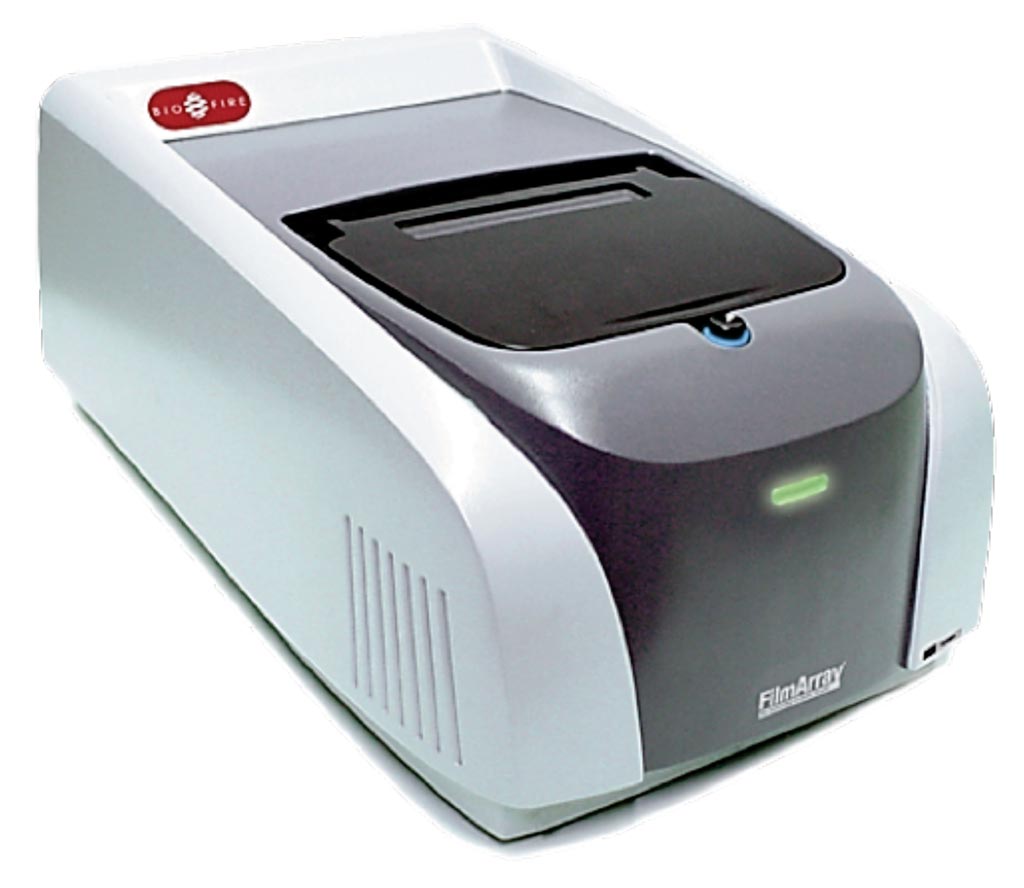Multiplex Testing Speeds Up CNS Infection Diagnosis
By LabMedica International staff writers
Posted on 16 Aug 2018
A variety of viral, bacterial, and fungal pathogens cause infections of the central nervous system (CNS), which range in severity from mild and self-limiting to severe and life-threatening. Initial symptoms like headache, fever, photophobia, and neck stiffness are not organism-specific so cannot be used to guide therapy.Posted on 16 Aug 2018
Current microbiologic methods identify a specific organism in only 30%-50% of patients with presumed CNS infections, largely due to poor culture sensitivity stemming from the low concentration of organism in cerebrospinal fluid (CSF) and low volume of CSF collected for microbiologic analysis.

Image: The FilmArray System is the new standard for syndromic infectious disease diagnostics (Photo courtesy of BioFire Diagnostics).
An assistant professor of pathology at the Medical College of Wisconsin (Milwaukee, WI, USA) has suggested that a multiplex testing approach simplifies ordering for clinicians and provides a relatively comprehensive result in as little as 60 minutes. Using multiplexed tests to analyze CSF resulted in a 44% to 600% increase in specimens with an identified organism, mostly due to nucleic acid amplification tests (NAATs’) increased sensitivity compared to culture.
While potentially beneficial, the significance of detecting these additional organisms needs to be considered in the context of other laboratory values and a patient’s clinical status. The FilmArray ME panel identified Streptococcus pneumoniae in an additional 12 CSF specimens when compared to culture; however, seven of these patients had no clinical or laboratory evidence of S. pneumoniae suggesting a false positive result potentially due to external contamination of the specimens.
Consequently, despite having a specificity of more than 99% for S. pneumoniae the test’s positive predictive value was just 60%. Similarly, a definitive diagnosis of CNS infection was made in only 11% of human herpesvirus-6 and 33% of CMV-positive specimens, possibly due to latent virus present within leukocytes in CSF rather than an indication of active disease. Combined, these data underscore the need to correlate FA-ME results with other laboratory values and host factors to validate a result, especially in cases with results unexpected or inconsistent with a patient’s risk factors and clinical course.
The FA-ME test identifies 14 microorganisms frequently associated with community acquired CNS infections. However, other patient populations including those with traumatic injury or surgery involving the CNS are susceptible to pathogens that are not part of the FA-ME panel. In these patients, FA-ME lacks broad utility, and a negative FA-ME result could be misleading. Blake W. Buchan, PhD, D(ABMM), the author of the study concluded that for these reasons, laboratories need to develop criteria to optimize the benefit from FA-ME testing including selecting appropriate patient populations and rejecting specimens. The study was published on August 1, 2018, in the journal Clinical Laboratory News.
Related Links:
Medical College of Wisconsin














